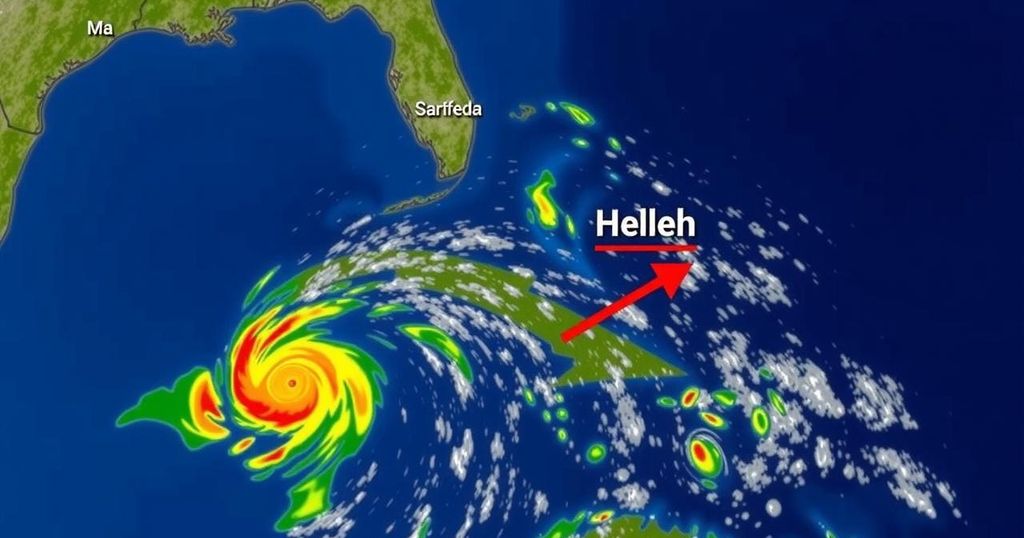November usually represents a quiet period in hurricane activity for Florida, with a disturbance in the southern Caribbean potentially developing into a tropical depression. Although a severe impact on Florida is deemed unlikely, the situation requires careful monitoring given the unpredictable nature of tropical systems and steering currents in the Gulf of Mexico.
As we enter November, the final month of the hurricane season, it is historically noted to be quiet, with only fourteen recorded tropical storm or hurricane strikes in the continental United States since 1851, making it one of the least active months. Nonetheless, the present situation in the Caribbean demonstrates some potential for disturbance. A weather system in the southern Caribbean is anticipated to develop into a tropical depression early next week and could potentially drift into the southern Gulf of Mexico thereafter. While the likelihood of severe impacts on Florida seems minimal, the possibility cannot be completely dismissed. The current atmospheric conditions show a wave of thunderstorms in the south-central Caribbean that has intensified as we approach the favorable window for tropical development. Although convection patterns are intermittent, the low-level circulation indicates that the system is becoming more defined. The National Hurricane Center (NHC) sees a significant opportunity for development in the coming week due to decreasing wind shear in the area. In the upcoming days, it is plausible that a tropical depression may emerge off the coast south of Jamaica. Strong subsiding high pressure over the Southeastern United States and western Atlantic is expected to steer this system towards the northwest, potentially affecting western Cuba or the Yucatan Peninsula. The warm waters in the northwestern Caribbean could sustain this system, leading to the emergence of a hurricane later in the week. By late in the week, the dynamics will shift with a cold front possibly altering the pattern of steering winds in the Gulf of Mexico, which could dictate the trajectory of this developing system. Most forecasts suggest that a westward track into the Gulf is likely. However, certain models predict a more rapid frontal passage, which could redirect the storm towards Florida. Despite these possibilities, a Florida threat remains questionable for several reasons. Historically, hurricanes in November are rare due to cooler coastal waters and unfavorable upper-level wind conditions. Thus, for a hurricane to develop and maintain strength, it must traverse quickly across the Gulf without succumbing to these adverse factors. Instances like Hurricane Ida in 2009, which weakened significantly prior to landfall despite initially peaking as a Category 2 storm, illustrate the challenges for late-season hurricanes. In summary, while the existing weather patterns and possible developments warrant attention, the risks of an impactful landfall in Florida remain low at this time. It is essential to monitor the situation as forecast models evolve over the coming week, and vigilance will aid in alleviating anxiety related to this disturbance.
Historically, November marks the quietest month in the Atlantic hurricane season, with very few instances of hurricanes impacting the U.S. landmass. As we approach this month’s hurricane predictions, meteorologists analyze environmental conditions conducive to tropical development. The southern Caribbean has recently shown signs of increased activity with potential implications for Florida and the Gulf of Mexico. Given the complexities of atmospheric dynamics, the development of a tropical system is worth watching, even if the odds of a significant impact are currently low.
In conclusion, while November typically brings minimal hurricane threats to Florida, current meteorological patterns suggest a watchful eye should be kept on developing disturbances in the Caribbean. The possibility of a tropical depression forming and moving into the Gulf of Mexico cannot be entirely ruled out. However, historical trends and current sea and wind conditions indicate that significant impacts on Florida remain unlikely. Residents are encouraged to stay informed as the forecast changes in the coming days.
Original Source: www.tallahassee.com






